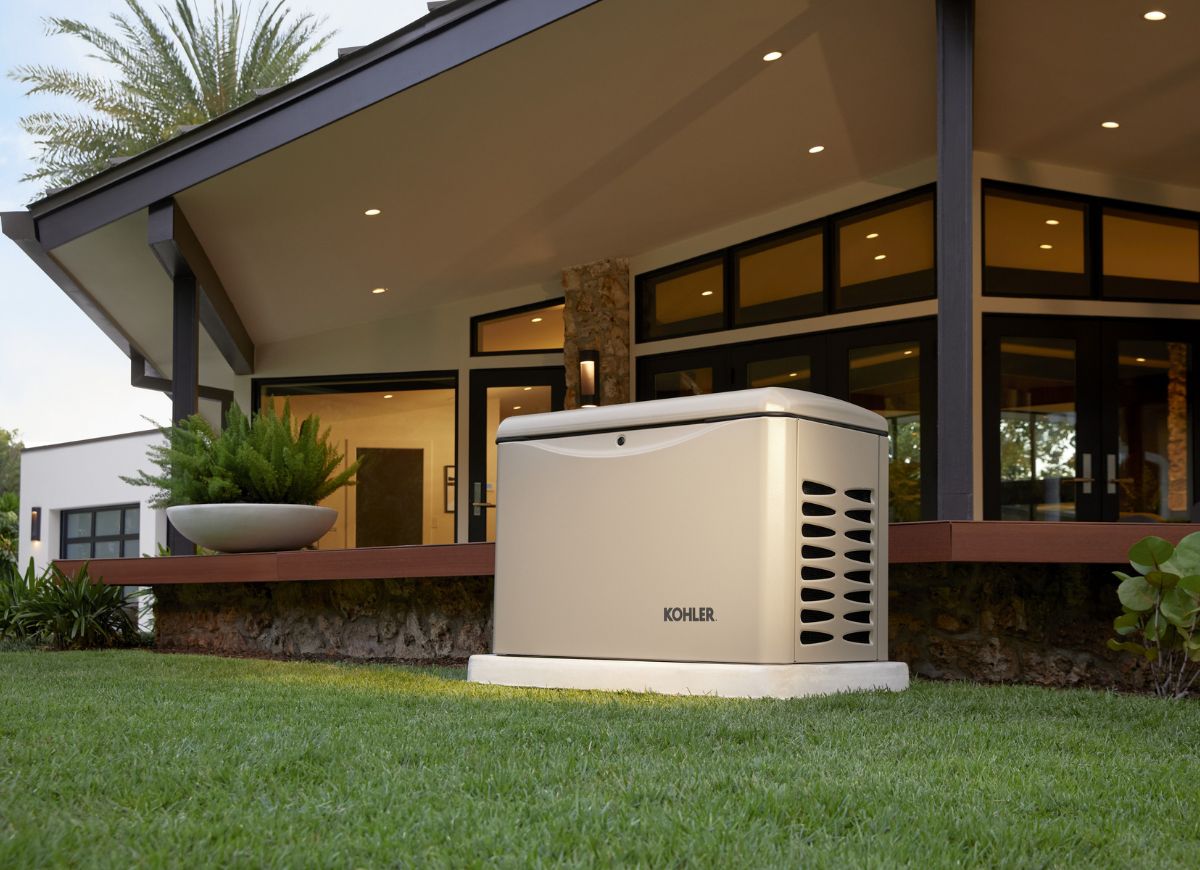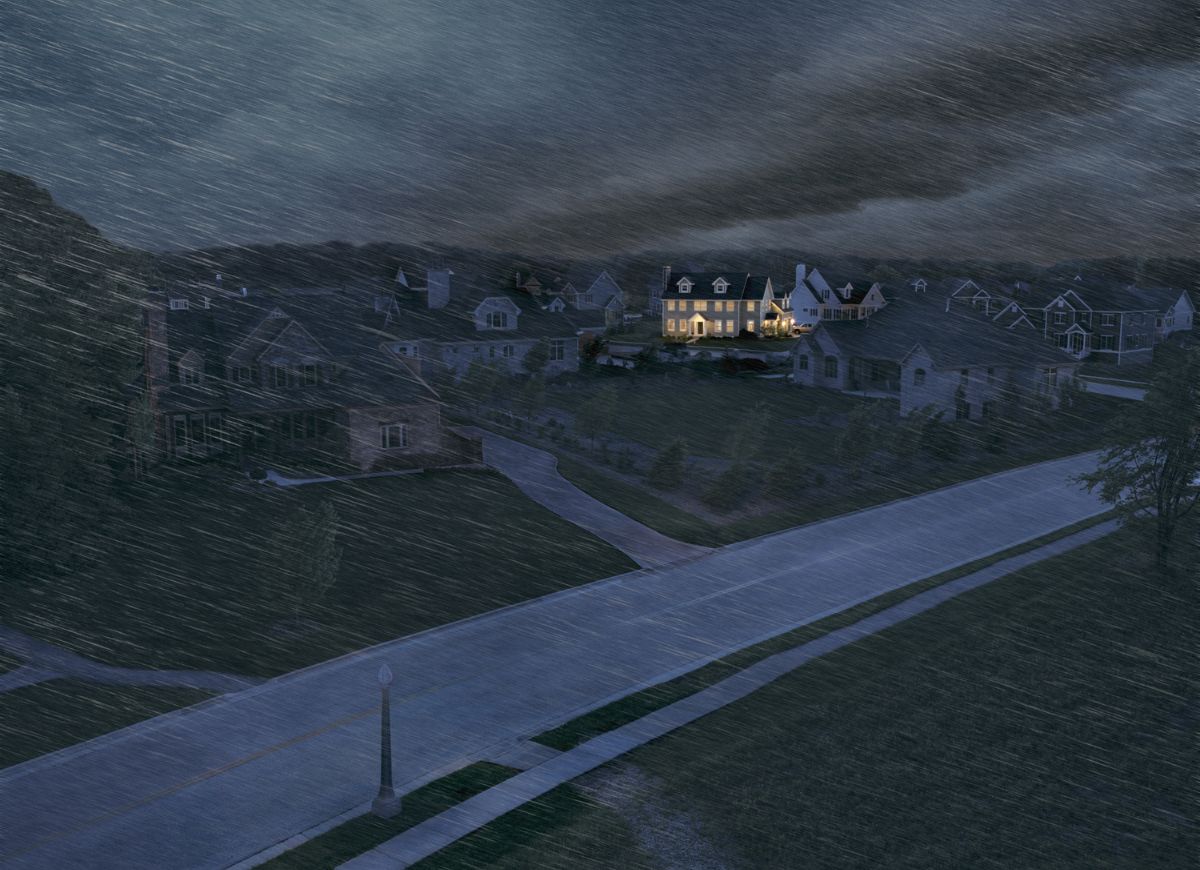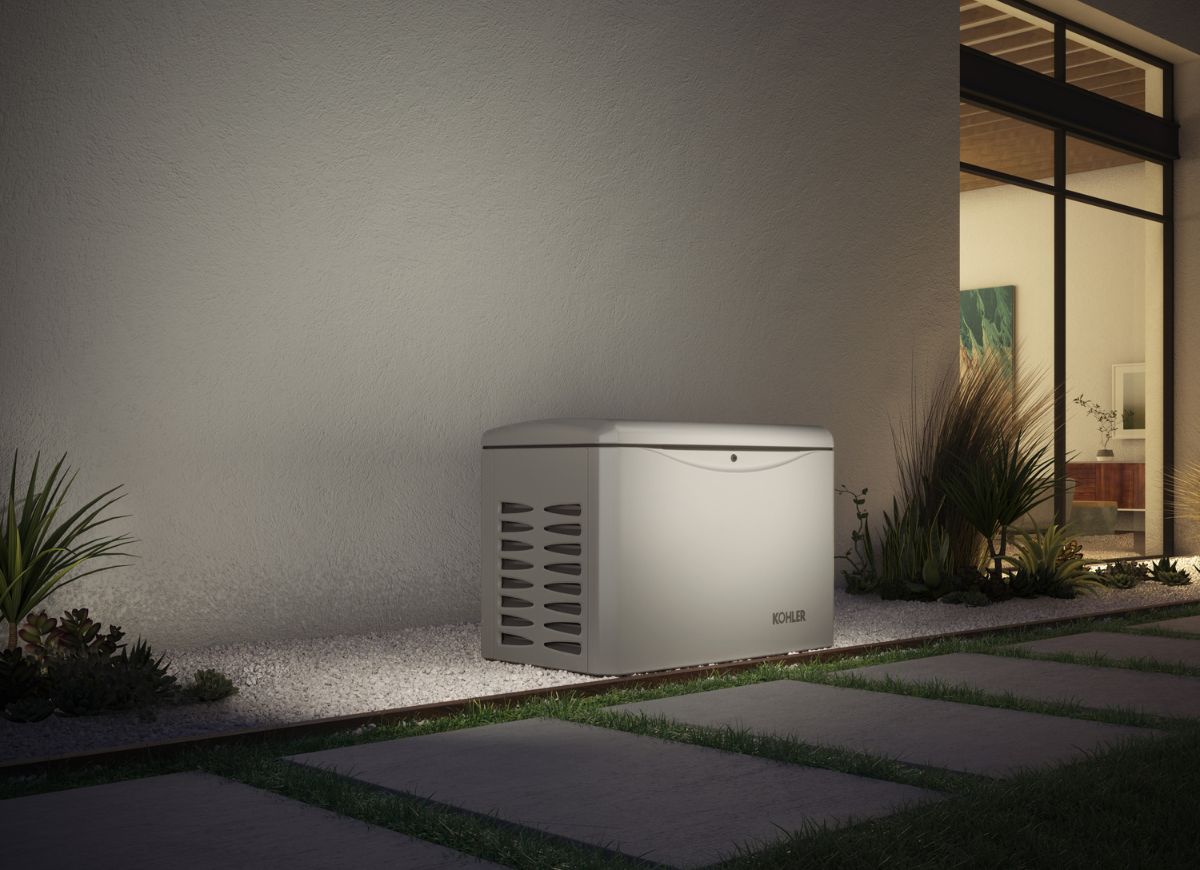

We may earn revenue from the products available on this page and participate in affiliate programs. Learn More ›
This content has been brought to you by Kohler. Its facts and opinions are those of BobVila.com.
One of the best safety nets homeowners can give themselves is a whole-house generator. This type of generator instantly powers on during an outage, providing electricity for lights, refrigerators, air conditioning, and even entertainment. Rather than sitting in the dark, you can stay comfortable and safe with a standby generator.
However, this is one safety net that homeowners should not DIY. Ensuring that the whole-house generator is installed correctly and operates safely requires a professional’s touch. Keep reading to learn more about what’s involved with whole-house generator installation.
Kohler’s new 26 kW generators are powerful and exceptionally durable—precisely what you need to keep your home running during a power outage. Learn More About Kohler Generators
Benefits of a Whole-House Generator
If you’re at all on the fence about whether or not you need a standby generator, consider its benefits. Here are some of the most important pros to owning a whole-house generator.
- Standby generators connect to the home with an automatic transfer switch that instantly kicks the generator on when the power goes out.
- They are sized to the home, meaning they can usually handle all of the home’s needs during a power outage, not just the refrigerator and a few outlets.
- Since they are connected to a home’s integrated natural gas or liquid propane supply, standby generators can run for days or longer without needing to refuel.
- They can prevent serious damage caused by frozen pipes by allowing the user to keep the heat on in the home.
- They can save money by ensuring food in your refrigerator and freezer stays cold, eliminating food spoilage.
- They can help you stay safe during lengthy storms and their aftermath while also allowing you to charge devices, stay up-to-date on news, and even entertain yourself to pass the time.
Assessing Your Backup Power Needs
To ensure the backup generator can keep up with all of the home’s needs, it’s important to size it properly. This can be a complicated process that involves collecting past energy bills, determining the maximum wattage that each device in the home will draw on start-up, and more math equations. Many generator companies have generator size calculators on their websites to help give customers a preliminary estimate. However, a professional should be consulted to help determine how large a residential generator should be.
While it might seem like just opting for the largest standby generator available is the safest option, oversize generators can be loud and inefficient. However, choosing an undersized generator is usually not a smart investment.
What’s the happy medium? The KOHLER 26 kW Home Generator. This generator produces up to 26 kilowatts of power while operating at just 56 to 67 decibels. That means it can power all major systems, appliances, and electronics within a large home at a noise level equivalent to an HVAC unit. It’s the gold standard of whole-house generators on the market.

Fuel Type Considerations
Whole-home generators have internal combustion engines at their core. They intake fuel, compress it, ignite it, and then exhaust it, forcing the cylinders to operate and generate power. The fuel they take in may vary, though.
- Natural gas generators can run off the home’s piped natural-gas supply, ensuring that there is always fuel available.
- Liquid propane generators can be tied to large propane storage tanks.
Natural-gas and propane generators are both great choices. They’re quiet, clean, and efficient. And fortunately, the KOHLER 26 kW Home Generator offers homeowners the option of either.
Permits and Approvals
Homeowners can’t just call an electrician and ask them to install a generator. There are certain permits and approvals that need to be taken care of before a whole-house generator can be connected to the home. Building codes can vary greatly between states, counties, and even cities, which is why it’s helpful that Kohler dealers pull all necessary permits and hire reliable contractors for the homeowner, eliminating this often confusing and stressful step in the process of installing a standby generator.
Electrical
Standby generators should be tied into the home by licensed, experienced electrical contractors only. To ensure this, your municipality may require an electrical permit. This permit ensures that the generator, its wiring, and the transfer switch are all installed correctly and safely. The building department will likely inspect the connections after their installation.
Plumbing
Before natural gas or propane can be piped out to the generator’s location, you may need to obtain a plumbing permit. The permit serves as permission but also somewhat verifies that the contractor knows what they’re doing when it comes to pipe fitting. The building department will probably check all of the fittings and pressure test the pipe to ensure everything is operating properly and safely.
HOA
Homeowners who live in residential communities might have to get approval for their generator from their HOA, or homeowners association. The HOA may have regulations about how large a generator can be, how loud it can be, and even what it looks like.

Why You Shouldn’t DIY This Project
DIYers shouldn’t hook up a generator to a house; whole-home generators need to be installed by licensed contractors. These devices create a lot of power and have to tie into the home’s fuel source and electrical panel to be operational. It’s a potentially dangerous project that takes trained professionals.
When installing the KOHLER 26 kW Home Generator, the dealer will hire a plumber to safely connect the natural gas or liquid propane to the generator. But there’s more than a fuel line at play, there’s also an automatic transfer switch. Only a licensed electrician should install the automatic transfer switch, as it’s critical that the steps are performed correctly.
Timing the Installation
Regardless of where you live, the best time to buy a home generator and have it installed is before you need it. You definitely don’t want to wait until the eve of a major storm because, typically, dealers aren’t able to pull permits and coordinate contractors on such short notice.

Site Selection
Another point to consider is where the generator will sit. It should be relatively close to the gas and electrical meters, as this makes tying the generator into the home’s utilities easier. However, it must also be at least 5 feet away from windows, doors, and even soffit vents.
Also, generators need a stable base. In many cases, the best option is to install the generator on a concrete slab specifically for the generator. The dealer will help you choose the right location for your generator, and coordinate installation.
Final Thoughts
Installing a whole-house generator comes with many considerations, but it’s a good investment for most homes. These devices can keep the lights and fridge running while also keeping the home’s inhabitants safe during long power outages. And the KOHLER 26 kW Home Generator’s incredible output, efficiency, low noise level, and variety of colors make it a great choice for any home.